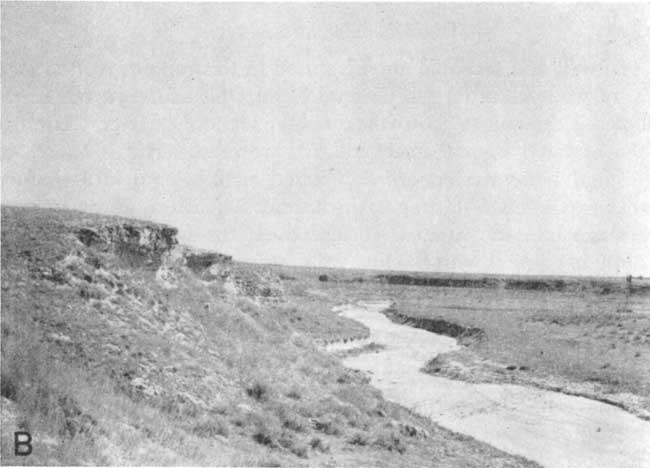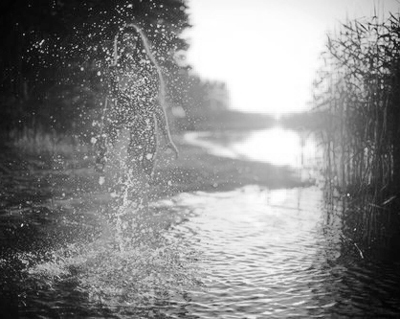
Whispers in the Dust: The Enduring Mystery of White Woman Creek
In the stark, sun-baked expanse of western Kansas, where the wind whispers through the dry grass and the horizon stretches endlessly, lies a geographic feature with a name that immediately seizes the imagination and chills the blood: White Woman Creek. It’s a name that conjures images of frontier tragedy, of courage and violence, and of a past that refuses to be forgotten, even as the details fade into legend and the creek itself often runs dry.
More than just a geographical marker on a map of Scott County, White Woman Creek is a story etched into the landscape, a powerful, unsettling testament to the brutal realities of westward expansion. Its very name, evocative and specific, demands attention, drawing visitors and historians alike into a swirling vortex of myth, memory, and a contested historical narrative that continues to evolve.
The Haunting Legend of the Plains

The prevailing narrative, recounted in local histories and passed down through generations, paints a harrowing picture. It tells of a lone white woman, often depicted as a pioneer wife or daughter, captured during an Indigenous raid on a homestead or wagon train in the mid-19th century. Her fate, in most versions, is tragic: she is eventually killed, either during captivity or in an attempt to escape, her body left near the creek that would forever bear her name. In some renditions, her remains are discovered by soldiers or settlers, a poignant symbol of the dangers faced by those venturing into the untamed plains.
One of the most widely circulated versions links the legend to the Beecher Island Battle of 1868, a desperate nine-day siege between elements of the U.S. Army and a combined force of Cheyenne, Arapaho, and Lakota warriors. The battle, fought on an island in the Arikaree River not far from the creek, was one of the many bloody clashes during the Plains Wars. It’s theorized that a woman captured earlier might have been brought to the vicinity, her subsequent death leading to the naming of the creek. However, concrete evidence directly linking a specific individual to the creek’s naming remains elusive.
"The story of White Woman Creek is deeply embedded in the local psyche," explains Dr. Sarah Miller, a historian specializing in the American West. "It speaks to the anxieties and fears of the pioneers, the ever-present threat of violence, and the ultimate sacrifice many made in their pursuit of a new life. But it’s also a story that, by its very nature, is difficult to verify, a blend of oral tradition, embellishment, and historical fragments."
Indeed, the power of the legend lies precisely in its ambiguity. No specific name for the woman is consistently agreed upon, nor is the precise date or circumstances of her capture and death. This lack of definitive detail allows the story to resonate more broadly, becoming a generalized symbol of the countless unnamed individuals who perished on the frontier. It transforms the creek into a natural monument, a silent sentinel to a past filled with both hope and despair.
A Landscape Forged in Conflict
To truly understand White Woman Creek, one must place it within the broader, often brutal context of the American High Plains in the 19th century. This was a land of immense beauty and crushing hardship, a vast ocean of grass where Indigenous nations like the Cheyenne, Arapaho, Comanche, and Lakota had lived for centuries, their cultures intricately tied to the buffalo and the land.
The arrival of white settlers, driven by Manifest Destiny and the promise of free land, irrevocably shattered this balance. The ensuing conflicts – often termed the "Indian Wars" – were characterized by broken treaties, retaliatory raids, massacres, and a systematic effort to dispossess Native peoples of their ancestral territories. The Sand Creek Massacre of 1864, where U.S. troops brutally attacked a peaceful Cheyenne and Arapaho village, is just one horrific example of the violence that permeated the region.
From an Indigenous perspective, the frontier was not merely a blank slate for settlement, but a homeland under siege. The raids and conflicts that led to stories like the White Woman Creek legend were often responses to encroachment, the destruction of buffalo herds, and the existential threat posed by an expanding American empire. "These stories, while tragic for all involved, rarely capture the full scope of Indigenous suffering and displacement," says James Cloud, a descendant of the Cheyenne people. "Our ancestors were fighting for their survival, their way of life, against an overwhelming force. The narrative of the ‘savage Indian’ and the ‘innocent pioneer’ is a simplification that erases much of the truth."

The creek itself, often a mere ribbon of parched earth winding through the shortgrass prairie, is a testament to the harsh environment. It’s an ephemeral stream, flowing robustly only after heavy rains, its banks carved by centuries of erosion. This arid landscape, part of the High Plains, was a formidable barrier for pioneers, where water was scarce and survival a daily struggle. The very desolation of the region lends a melancholic authenticity to the legend, making it easy to imagine a solitary tragedy unfolding amidst such unforgiving beauty.
Local Identity and the Weight of History
For many residents of Scott County, White Woman Creek is more than just a place on a map; it’s an indelible part of their heritage. Local businesses incorporate the name, historical societies preserve its tales, and the legend serves as a touchstone for community identity. It’s a reminder of the resilience of their ancestors, the grit and determination required to tame such a landscape.
"We grew up with that story," says Martha Jenkins, a lifelong resident of Scott City, the county seat. "It’s part of who we are, part of the fabric of this place. It reminds us of the sacrifices people made to build this community." For many, the name is simply a historical fact, a piece of the past, not intended to cause offense but rather to mark a significant, albeit sorrowful, event.
Yet, in recent years, the very name of White Woman Creek, like many geographical markers across the United States, has come under increasing scrutiny. As society grapples with its colonial past and seeks to amplify marginalized voices, place names derived from traumatic or one-sided historical events are being re-evaluated. Critics argue that names like White Woman Creek perpetuate a narrow, often sensationalized narrative that centers white suffering while glossing over the immense violence inflicted upon Indigenous populations.
The debate often centers on questions of historical accuracy, cultural sensitivity, and who has the right to name and define a landscape. Is it appropriate for a significant natural feature to bear a name that evokes a violent encounter, particularly when the story itself is vague and potentially contributes to harmful stereotypes? Or is it a vital piece of local history that should be preserved, warts and all, as a reminder of a complex past?
A Contested Legacy
The discussion around White Woman Creek mirrors broader national conversations about monuments, statues, and place names that commemorate figures or events now viewed through a more critical lens. From "Squaw Peak" to names honoring Confederate generals, communities are wrestling with how to reconcile a painful past with present-day values.
Those advocating for a name change or at least a more nuanced interpretation often point out that the legend, while tragic, focuses solely on the victimhood of a white woman, potentially dehumanizing the Indigenous peoples involved by casting them purely as aggressors. They argue that such names can reinforce harmful stereotypes and overlook the deeper historical context of land dispossession and cultural destruction.
"Place names are powerful," says Dr. Miller. "They shape our understanding of history, our relationship to the land, and our identity. When a name is rooted in violence and uncertainty, and particularly when it highlights one group’s tragedy while obscuring another’s, it’s natural for people to question its continued use."
However, changing a deeply ingrained place name is no simple task. It often meets with resistance from those who see it as an attempt to erase history, a rejection of their heritage, or an imposition of modern sensibilities on a bygone era. For many, the name White Woman Creek is not just a label but a connection to their ancestors, a marker of the sacrifices that allowed their communities to thrive.
The Enduring Power of a Name
Today, White Woman Creek remains a potent, if unsettling, symbol of America’s frontier past. It is a reminder of a time when the West was truly wild, when survival was precarious, and when cultures clashed with devastating consequences. The creek itself, whether flowing or dry, continues its silent journey through the Kansas plains, a natural monument to a legend that refuses to die.
The mystery surrounding the "white woman" may never be fully solved. Her identity, her exact fate, and the precise circumstances of the creek’s naming are likely lost to the winds of time and the dust of the prairie. But the questions her name provokes – about memory, history, identity, and reconciliation – are more relevant than ever.
White Woman Creek forces us to confront uncomfortable truths: that history is rarely simple, that heroes and villains are often a matter of perspective, and that the names we give to places carry immense weight. It stands as a silent challenge, urging us to look beyond the surface, to listen to all the whispers in the dust, and to understand the complex, multifaceted stories that truly shape our land and our legacy. In its enduring mystery, White Woman Creek demands not just remembrance, but a deeper, more empathetic engagement with the entirety of America’s past.


